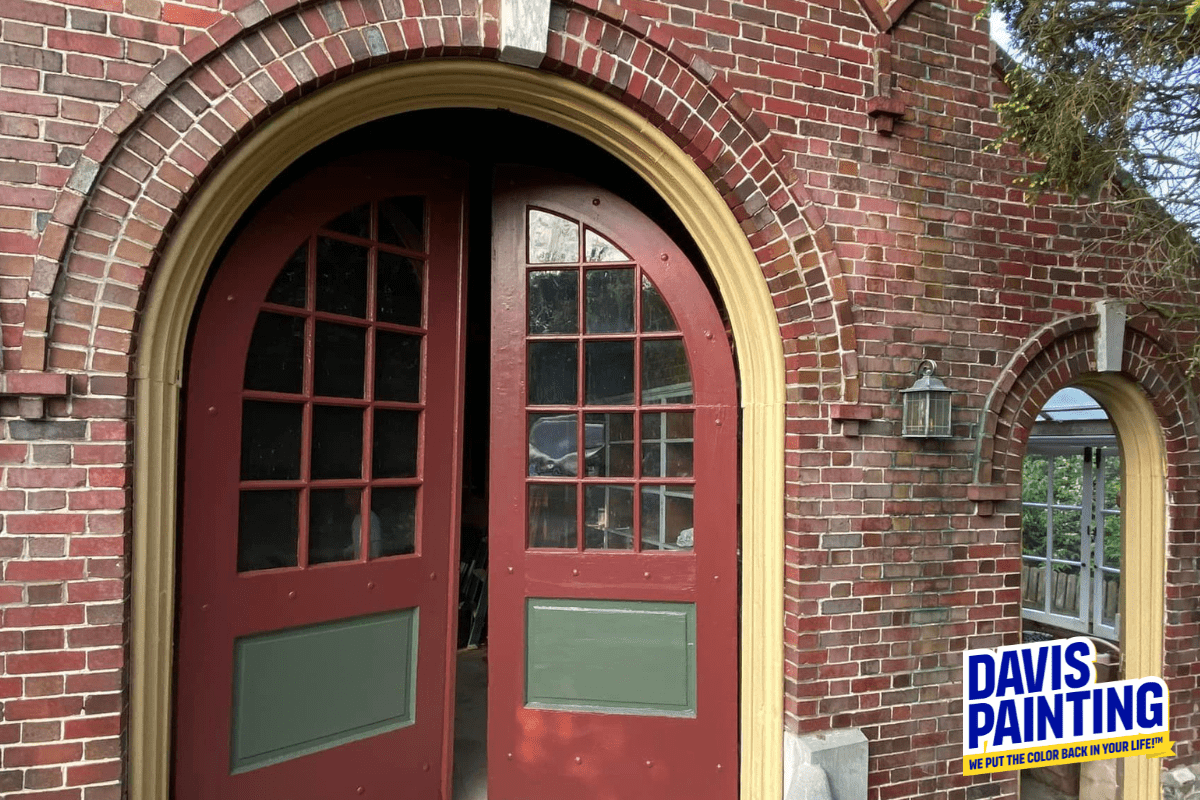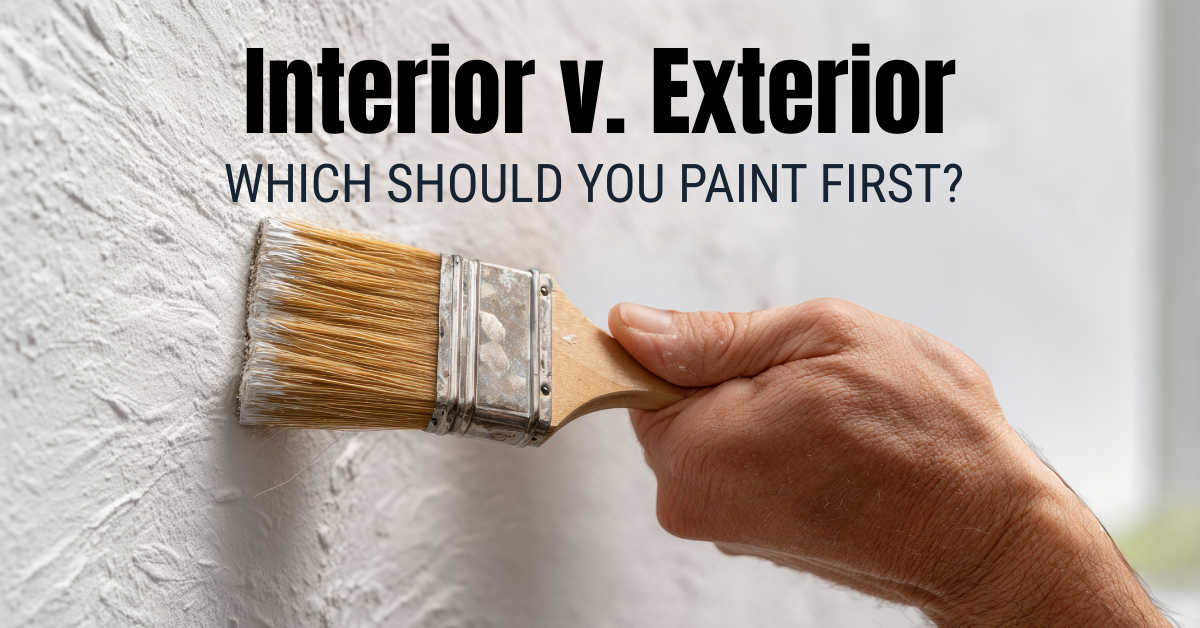Owning a historical home is both a privilege and a responsibility. Preserving its charm and authenticity means making careful choices, especially when it comes to paint colors. The right color palette can bring out the architectural beauty of your home and maintain its historical significance. However, choosing period-appropriate paint colors can be tricky, as trends have changed dramatically over time.
At Davis Painting, we have experience working with historic homes and understand the importance of selecting colors that reflect their original character. In this blog, we’ll explore tips on how to choose the right period-appropriate paint colors for your historic home while balancing style, tradition, and modern needs.
1. Research the Era of Your Home
The first step in choosing period-appropriate paint colors is understanding the architectural style and era of your home. Different periods and architectural styles had distinct color trends, so researching the historical context of your home will guide your choices.
Common Architectural Styles and Their Color Palettes:
- Victorian Homes (1837-1901): Bold and dark hues like deep greens, burgundies, ochres, and dark blues were popular, often in intricate trim and contrasting patterns.
- Colonial Homes (1600-1800): Muted, earth-toned colors like soft whites, beiges, and grays were common. These homes often used natural pigments for paint, creating subtle and subdued tones.
- Craftsman Bungalows (1900-1930): Earthy, nature-inspired shades like warm browns, olive greens, and rust reds reflected the movement toward simpler, handmade aesthetics.
- Mid-Century Modern (1940s-1960s): Brighter, bolder colors like pastel blues, mustard yellows, and oranges came into vogue, often combined with neutrals for a clean look.
Understanding your home’s architectural style helps you narrow down color choices and ensures that your paint selection complements its historical period.
2. Examine Original Paint Layers
If you’re unsure of what colors were originally used in your home, one of the best ways to find out is by examining the original paint layers. In many historic homes, layers of paint can be uncovered beneath newer coats. By carefully scraping or sanding down small areas in corners or behind moldings, you can often discover the original colors.
Alternatively, some historic paint experts use chromochronology, a method that involves analyzing paint samples to reveal every layer of paint applied over time.
Once you identify the original colors, you can either replicate them or use them as inspiration for updated yet historically sensitive choices.
3. Use Historic Paint Collections
Many major paint manufacturers offer historical color collections designed to match the shades used during different time periods. These collections are a great resource for homeowners looking to stay true to the era of their homes while using modern, durable paints.
Some well-known brands with historic paint collections include:
- Sherwin-Williams: Offers a line of “Historic Colors” based on popular colors from different architectural periods.
- Benjamin Moore: Features a “Historical Collection” inspired by colors found in 18th and 19th-century architecture.
These collections take the guesswork out of color selection and help ensure your chosen hues are accurate to the time period of your home.
4. Consider the Exterior and Interior Separately
Exterior and interior paint colors often followed different trends in historical homes. When choosing colors for your historical home, consider them separately to ensure authenticity both inside and out.
Exterior Paint Colors:
- Architectural Details: Pay attention to architectural elements like trim, shutters, doors, and railings. In many historical homes, these details were often painted in contrasting colors to highlight craftsmanship.
- Regional Influence: Remember that geographical location also played a role in paint choices. For example, homes in the South might have lighter pastel shades due to the warmer climate, while Northern homes used darker, more weather-resistant colors.
Interior Paint Colors:
- Room Function: Different rooms were traditionally painted in different colors. For example, Victorian dining rooms might have dark, rich colors like deep red, while parlors or sitting rooms had lighter, more welcoming shades.
- Lighting: Consider how natural light enters each room. Historical homes often had smaller windows, so lighter or warmer colors were used to brighten spaces.
Davis Painting can help you identify the best paint combinations to preserve the original beauty of both the interior and exterior of your historical home.
5. Balance Historical Accuracy with Modern Needs
While staying true to your home’s original design is important, you don’t have to be limited by it. Many homeowners choose to balance historical accuracy with modern functionality by subtly updating the color palette. This allows you to maintain the home’s charm while creating a space that feels livable and fresh.
Ways to Modernize While Staying True to History:
- Toned-Down Hues: Instead of using the original bold colors, consider using more muted, modern versions of those shades.
- Accent Walls: Keep most of the room historically accurate, but add a modern touch with a single accent wall in a more contemporary shade.
- Modern Finishes: Historical homes didn’t have the range of finishes we have today. You can opt for finishes like eggshell or satin, which offer a modern sheen while maintaining the spirit of the original colors.
At Davis Painting, we can help you find that perfect balance, allowing you to honor your home’s history while incorporating modern design elements.
6. Test Paint Colors Before Committing
Before you make your final decision, it’s important to test your paint colors. This is especially true for historical homes, where the lighting, age of the materials, and the home’s overall architecture can dramatically affect how colors appear.
- Test on Small Sections: Try your chosen colors on small areas of both the interior and exterior walls, observing how they look at different times of day and under various lighting conditions.
- Consider Surroundings: For exteriors, consider how the surrounding landscape, nearby homes, and natural light will impact the appearance of your chosen colors.
Taking the time to test your colors ensures you achieve the perfect look that complements your home’s historical beauty.
7. Consult a Professional
If you’re unsure about which colors to choose or how to properly apply them, consulting a professional with experience in historic homes can make all the difference. Professional painters like Davis Painting can guide you through the process, from selecting the right color palette to executing a flawless paint job that honors the history of your home.
We offer expert consultation services, helping you make informed decisions about paint color, finishes, and application techniques that are best suited for your home’s unique architecture and style.
Choosing period-appropriate paint colors for your historical home is an exciting opportunity to bring out its architectural beauty and preserve its original charm. By researching your home’s history, using historical paint collections, and balancing authenticity with modern needs, you can create a stunning, historically accurate look that stands the test of time.
At Davis Painting, we specialize in working with historical homes and can help you choose the perfect colors and finishes to enhance your home’s character. Whether you’re looking to restore your home to its original splendor or add a modern twist, we’re here to bring your vision to life. Contact us today to learn more!



